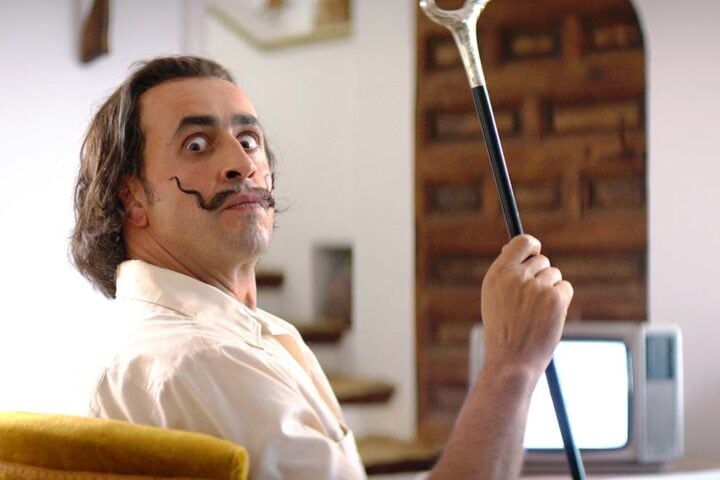Much like Jane Schoenbrun’s I Saw The TV Glow, writer-director Miyazaki Daisuke’s Plastic is at its strongest, warmest, and most endearing when it’s fixated on the bond between two kids united by their shared love for a forgotten piece of fictional pop culture ephemera. But where I Saw the TV Glow rails against the loss of youth, Plastic seems content to wander around the streets of Nagoya aimlessly noodling on guitars.
Miyazaki’s film begins with long shot of a high school girl, Ibuki (Ogawa An), riding her bike around her hometown while listening to her favorite “you’ve probably never heard of them” band, when she passes a bleached-blond busker, Jun (Fujie Takuma), who just so happens to be playing the same song. Instantly obsessed with seemingly the only other person their age who knows the band, the two quickly bond, then fall in love. It’s a pitch-perfect start to the film, which rather effortlessly plays the hits as far as tales of young love go, spiced up by frequent needle drops from the fictional garage rock band in question, Exne Kedy and the Poltergeists.
But the freewheeling energy of Miyazaki’s film dissipates as soon as it cuts from 2017 to 2018, with Jun and Ibuki bored out of their skulls at the same movie theater where they first kissed, barely touching and arguing about Jun’s future. Ibuki is studious and wants to go to college, while Jun wants to keep playing the guitar, and never the twain shall meet. As for Plastic, it feels as if it’s suddenly weighed down by the inevitable encroachment of normie adulthood.
The film’s characters suffer from indecision about everything, seemingly only able to express their emotions or make decisions in the realm of musical fantasy. If Jun and Ibuki eventually become boring adults, it’s because we can already see the root of that in their disaffected teenage selves, which is something that their excellent taste in music can’t really hide. There’s thematic weight to be mined from that, especially once the film takes us into the Covid-19 pandemic, at which point the characters’ pervasive loneliness and aimlessness begins to hit hard. But because they were wandering around the ghost towns of their own adulthood by then, there’s not enough contrast to make the film feel like it’s saying anything specifically about that sense of isolation.
It’s certainly plausible that that Plastic is purposefully articulating that the most interesting thing that will ever happen to these two people occurred when they were teenagers, and that they’ll spend their entire lives attempting to reconnect with that feeling. But life flatlines for Jun and Ibuki after high school and never recovers. They, and by extension us, experience no real highs or lows, and to the point that even the vaguest hint of a reconciliation at the end never feels like that exciting of a prospect. Even a banal life can have a musicality and life to it, but once it leaves high school, Plastic’s portrait of adult life comes off as a monotone drone.
Since 2001, we've brought you uncompromising, candid takes on the world of film, music, television, video games, theater, and more. Independently owned and operated publications like Slant have been hit hard in recent years, but we’re committed to keeping our content free and accessible—meaning no paywalls or fees.
If you like what we do, please consider subscribing to our Patreon or making a donation.



